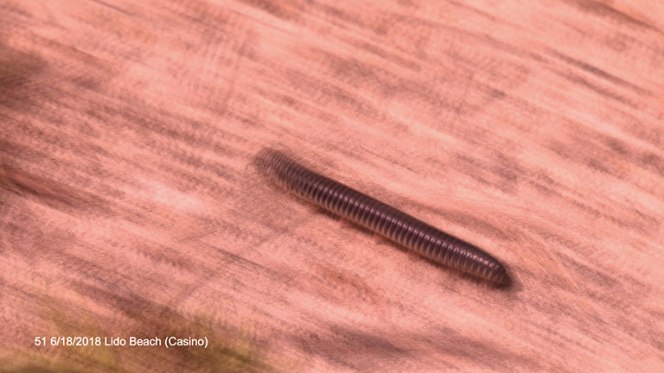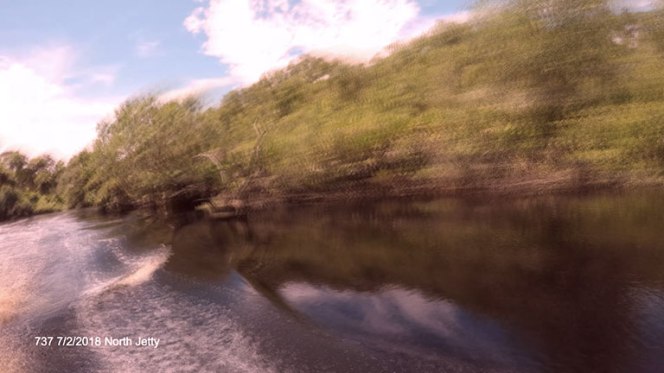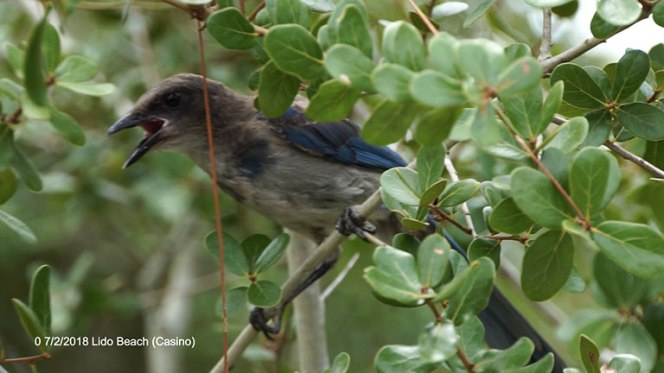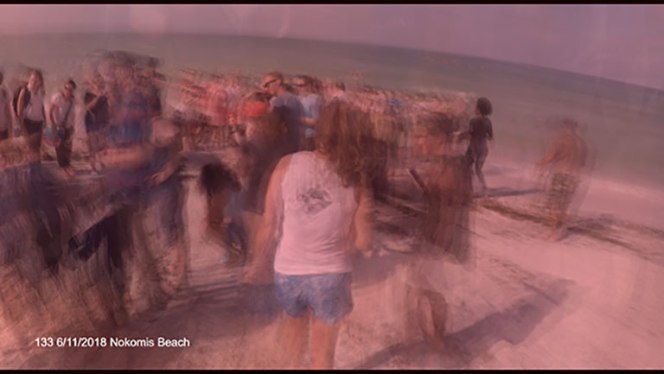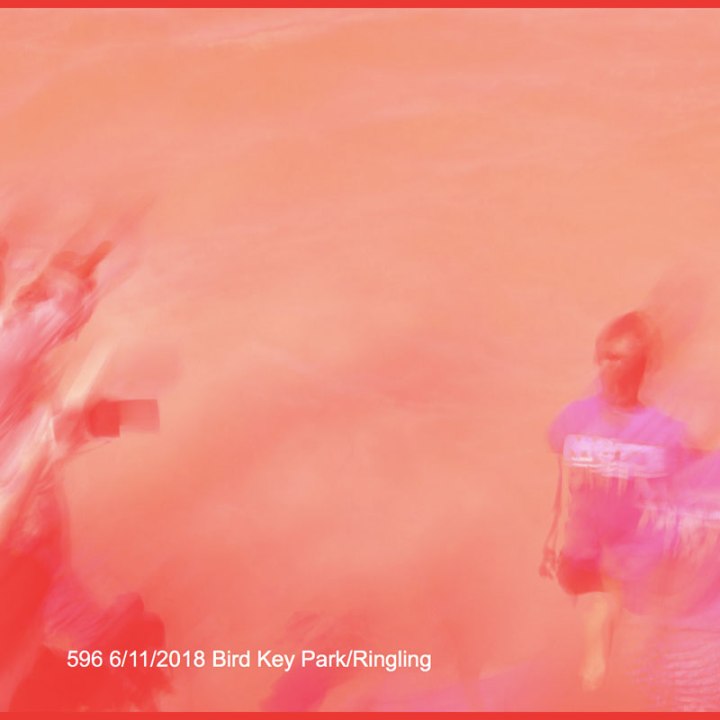AROUND OSPREY, Installation
Based on our residency at the Bay Preserve in Osprey, Florida, we have designed a two-element video installation.
Element A is a series of 12 poetic videos organized into a program for projection on one wall of the gallery. The moving pictures and sound treatments for these videos have been gathered from our notes, poetry, stories, research outings, and encounters.
Element B (no sound), for projection on an adjacent wall, is a bank of 12 video works also drawn from explorations by land and water in and around the reaches of the Bay Preserve. After applying only minimal editing, the videos for Element B were added to a Max/MSP/Jitter patch for playback and interaction with K. Brevis weekly cell counts by day and location on 16 South Florida beaches over a twelve-month timespan.[1]
Our residency took place during heightened presence of Florida’s Red Tide, also known by its scientific name Karenia Brevis or K. Brevis. As the organisms’ cell count grew, fish and other oxygen-starved animals washed up. For humans, it became difficult to walk on the beach as we choked for air. While rumors circulated about runoffs from Lake Okeechobee exacerbating this naturally occurring problem, we thought about the potential for the problem spreading further into the animal food chain. As artists, we sometimes react to environmental balances/imbalances through observation and discussion.
With Element B, we have used sets of recorded K. Brevis cell count data as a way to think about the more far-reaching effects of Florida’s Red Tide.
Viewing Element B projection
When the counts are low, there is little-to-no change in the moving pictures. When the counts are higher, the images take on corresponding degrees of red tint and temporal shifts that show up as blurriness. The cell count data and location are not directly related to the images they are placed upon.
[1] K. Brevis (Florida’s Red Tide): https://en.wikipedia.org/wiki/Karenia_brevis K. Brevis naturally produces a suite of potent neurotoxins collectively called brevetoxins, which cause gastrointestinal and neurological problems in other organisms and are responsible for large die-offs of marine organisms and seabirds.
data courtesy Jennifer Clemente, Environmental Specialist III, Florida Dept. of Health, Sarasota County.
Element A
Password needed: https://vimeo.com/342852171
Element B
Password needed: https://vimeo.com/348696953
Valerie LeBlanc and Daniel H. Dugas
July 1 – August 15, 2018




